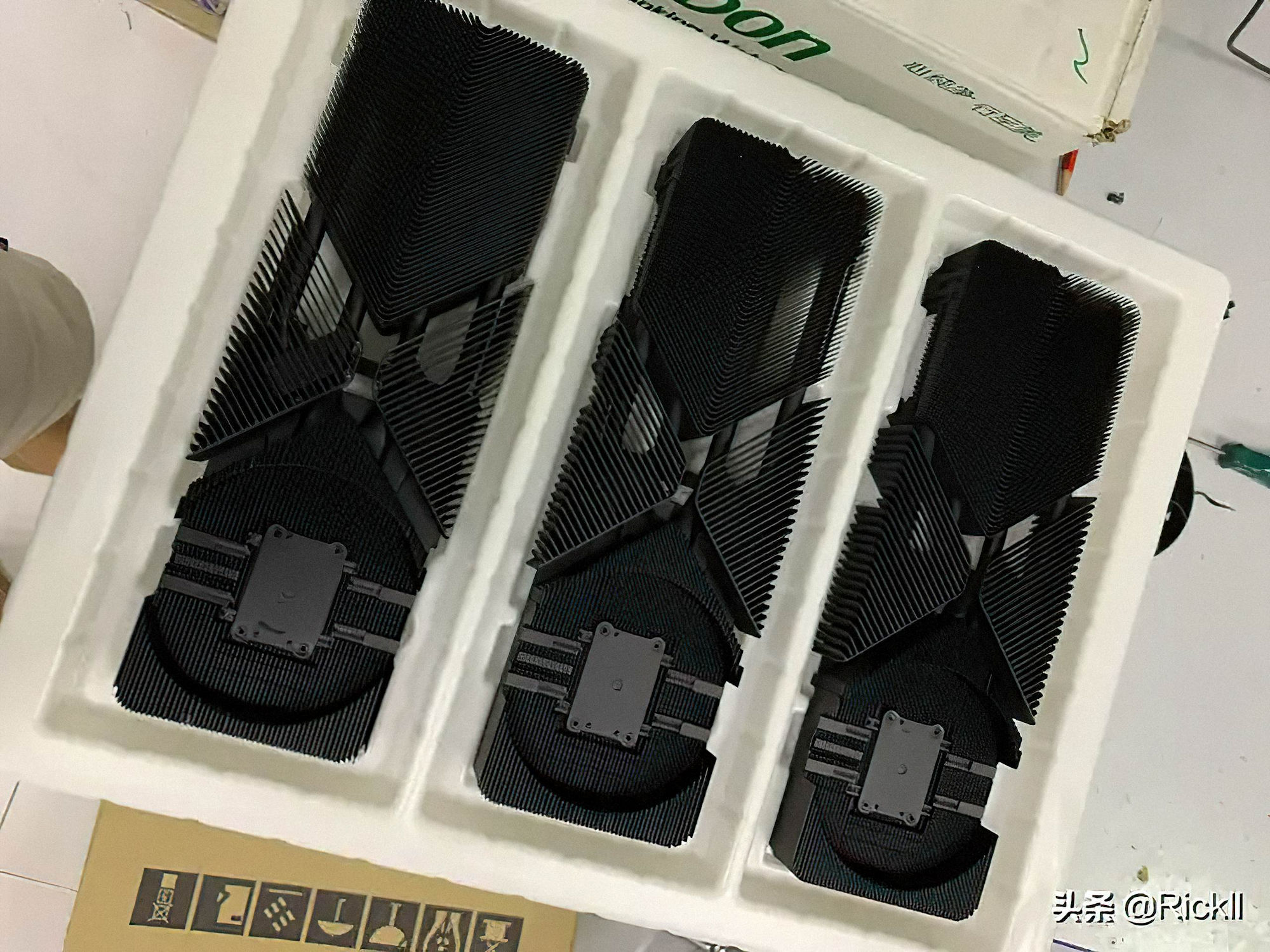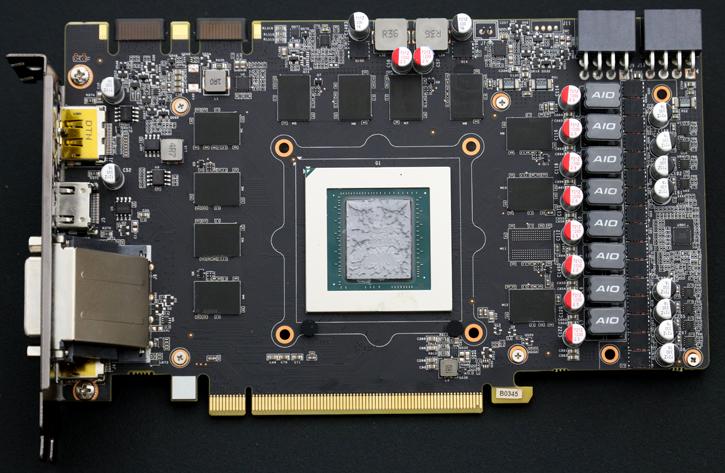That or bunch of fat heatpipes. The air circulated by "rear fan" doesn't leave the case, only small portion of "front fan" does via I/O-shield, most is pushed back to case.Well they're all fake concepts, the orientation of the fan isn't necessarily correct. Good point on the heatsink extending though, that's possible.
You are using an out of date browser. It may not display this or other websites correctly.
You should upgrade or use an alternative browser.
You should upgrade or use an alternative browser.
Nvidia Ampere Discussion [2020-05-14]
- Thread starter Man from Atlantis
- Start date
-
- Tags
- nvidia
Well they're all fake concepts, the orientation of the fan isn't necessarily correct. Good point on the heatsink extending though, that's possible.
I was referring to the pics of the actual cards not the renders. Of course it could all be bullshit but its hard to imagine someone going through the trouble of making such elaborate fakes.
Our trusty twitter leakers seem to think Ampere will drink a lot of watts. If true it would explain the funky cooling.
My guess is this is fake, and I hope that's the case. Don't get me wrong, specs like this for 3080 would be fine by me, but again, where's the Ti?
Seems reasonable to me. The Ti would get a 20% wider bus and 20% more SMs. That would be in line with Turing where the 2080 Ti is ~ 20% faster than the 2080 super.
Ah ok, I missed those. Yeah I guess if they're actually real then it must be heat pipes in front of the end fan.I was referring to the pics of the actual cards not the renders. Of course it could all be bullshit but its hard to imagine someone going through the trouble of making such elaborate fakes.
Our trusty twitter leakers seem to think Ampere will drink a lot of watts. If true it would explain the funky cooling.
Seems reasonable to me. The Ti would get a 20% wider bus and 20% more SMs. That would be in line with Turing where the 2080 Ti is ~ 20% faster than the 2080 super.
Nvidia hasn't used the same silicon for the top-tier part and the minus one SKU since Fermi.
2080 Ti uses TU102
2080/Super uses TU104
1080 Ti uses GP102
1080 uses GP104
and on and on and on
Couple that with GDDR6x out of left field and this feels fake to me.
Nvidia hasn't used the same silicon for the top-tier part and the minus one SKU since Fermi.
2080 Ti uses TU102
2080/Super uses TU104
1080 Ti uses GP102
1080 uses GP104
and on and on and on
Couple that with GDDR6x out of left field and this feels fake to me.
Sure but that was before RDNA and Big Navi. When is the last time AMD had a competitive architecture and a big chip? The 780 Ti and 780 shared the same silicon and there's a ton of precedent before that.
The GDDR6x stuff is clearly nonsense though.
Bondrewd
Veteran
Between voluntary margin cuts and involuntary mss loss nVidia always picks the former.Is Nvidia going to voluntarily sacrifice margins?
Between voluntary margin cuts and involuntary mss loss nVidia always picks the former.
They certainly did that recently in response to the 5600 xt. Can’t recall too many times recently when nvidia was forced to lower prices though. This could be uncharted territory.
Bondrewd
Veteran
Super SKUs are the obvious response to anything Navi.Can’t recall too many times recently when nvidia was forced to lower prices though.
More GPU for less money, even with more VRAM here and there.
Cuda 11 is out with Ampere optimization guides etc.:
https://docs.nvidia.com/cuda/
https://docs.nvidia.com/cuda/
Man from Atlantis
Veteran

https://videocardz.com/newz/nvidia-geforce-rtx-3080-heatsink-leaked
If it's real; Then I don't think it's a 320-350W power hog that rumours suggest because usage of heat pipes. Last nvidia card with heatpipes was RTX 2060.

https://videocardz.com/newz/nvidia-geforce-rtx-3080-heatsink-leaked
If it's real; Then I don't think it's a 320-350W power hog that rumours suggest because usage of heat pipes. Last nvidia card with heatpipes was RTX 2060.
Wouldn’t 350W require beefy power delivery and therefore a full sized PCB ?
Man from Atlantis
Veteran
Wouldn’t 350W require beefy power delivery and therefore a full sized PCB ?

Not necessarily, This is Zotac GTX 1080Ti Mini, 250W TDP, 300W Board power limit. I think, Nvidia can choose higher quality VRM equipments and deliver better efficiency.
If a 3080 is about the same computing power as a 2080ti with maybe more RT cores and tensor cores, is it really expected to draw more power than a 2080ti when it’s on a smaller node?
Rumor says same number of SMs but nothing about clocks. Maybe they’re pushing clocks and power consumption higher to fend off Navi.
Rumors also say the 3080 is on Samsung 8nm. Who knows how that compares to TSMC 12nm.
Last edited:
Rumor says same number of SMs but nothing about clocks. Maybe they’re pushing clocks and power consumption higher to fend off Navi.
Rumors also say the 3080 is on Samsung 8nm. Who knows how that compares to TSMC 12nm.
I think the RTX2080 was roughly in the same ballpark as the GTX1080ti in terms of power consumption, so I'm hoping that trend continues and we don't see some massive ballooning of power consumption this generation. I was hoping we'd get large performance increases just from the node transition while keeping power consumption roughly the same.
Bondrewd
Veteran
Oh yeah they do.Maybe they’re pushing clocks and power consumption higher to fend off Navi.
But so does AMD; for speed daemon GPU age is nigh.
Similar threads
- Replies
- 49
- Views
- 7K
- Replies
- 98
- Views
- 34K
- Replies
- 1
- Views
- 7K
